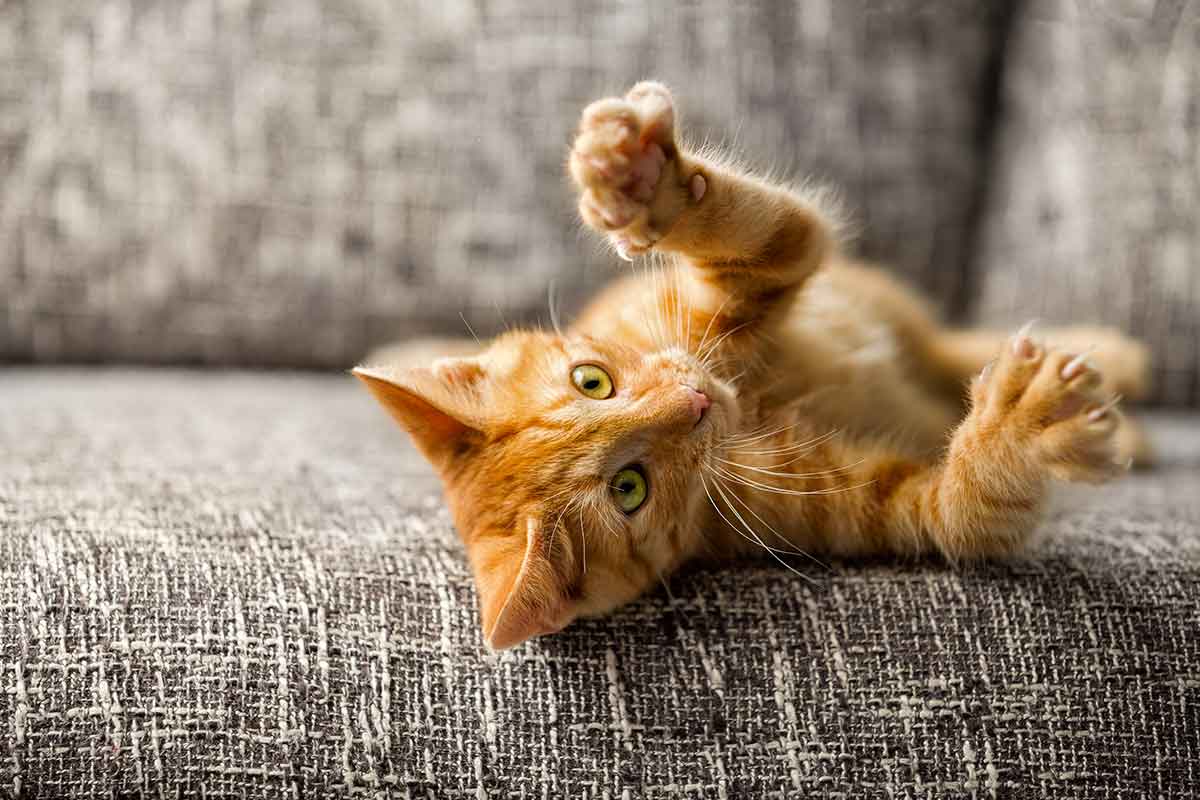For many cat owners, redwood would be a good choice when selecting living room furniture. While we all bemoan that rip-rip sound of claws on fabric just as we’re dozing off at night, we can’t change the fact that nature intended cats to have claws.
The act of scratching serves a number of purposes for our cats — despite the fact that we often feel that the destruction of our sofa is their primary goal. Since scratching is such an integral part of cat behavior, it’s in our own best interest (and our furniture’s!) to understand why they do it and to help them channel that energy.
First, scratching serves as a feline pedicure. The action removes the outer sheath, leaving behind a freshly honed, conditioned claw.
Second, in the wild as well as indoors, scratching serves as a kind of calling card, since scent glands are embedded in the paw pads. It’s one way for the cat to mark his territory.
Third, it feels good. Have you ever noticed the look of pleasure and concentration in a cat that’s really into her scratching post?
The good news is that you can enable your cat’s need to scratch and still protect your furniture. Investing in several good scratching posts costs less than a new sofa. A tall scratcher with a couple of cubbies or shelves and placed by a window is a good place for your cat to lounge and bird watch. And cardboard scratchers are inexpensive and come in many different sizes and configurations.
If you’re starting from, er, scratch with a kitten, provide sturdy scratchers with a variety of surfaces – sisal, carpet, cardboard – angled, vertical, flat. Place them in various locations, especially in sleeping areas. Cats like to stretch and scratch when they first awake.
Inside/outside cats have trees and other surfaces to use, so complaints about inappropriate scratching often come from people whose kitties live inside exclusively. A cat who has lived outside may be comfortable having a log to scratch on in making the transition to indoors.
Sturdy is the operative word here. Nothing deters a cat more from using a scratcher than having one fall over on her in mid-stretch. Look for recommendations from cat-loving friends if you’re buying online. Or don’t be afraid to give the scratcher a good shake to check its sturdiness. Be sure the carpeting has a tight weave and sisal is attached securely.
Lace the surfaces liberally with catnip if your cat responds to it and lavish praise and a special treat when the kitty uses the scratchers.
In addition to encouraging your cat to scratch in the right place, you can try ways to deter him from scratching in the wrong place. Sticky Paws transparent adhesive strips or plain double-sided adhesive tape may help protect furniture. Cats don’t like the sticky feel on their paws.
Soft Paws nail caps may help deter scratching, but beware of the recent trend of using claw covers as a decorative manicure. They must be replaced regularly since claws do grow quickly and there is a risk that the claw cannot be retracted and the claw cover would be difficult to remove.
Punishment does little to deter scratching. It will simply teach your cat to scratch that surface only when you’re not around to monitor her behavior. Yelling, rattling a can of pennies, or using a squirt bottle may distract the cat momentarily, but she’ll probably move to a less conspicuous area and become more fearful of you.
If you catch her in the act, pick her up and bring her to the preferred location. And if you really need to protect that Chippendale settee, consider isolating the cat when you’re not around to supervise.
This article was reviewed/edited by board-certified veterinary behaviorist Dr. Kenneth Martin and/or veterinary technician specialist in behavior Debbie Martin, LVT.








